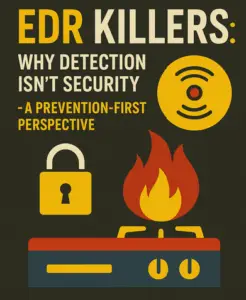 In today’s increasingly mobile business world, there is always a risk of losing important data to malware attacks, accidents or end-user negligence. With advanced technology, however, businesses can minimize their risk of data loss by identifying and monitoring data and putting in place certain safeguards to help protect it from loss.
In today’s increasingly mobile business world, there is always a risk of losing important data to malware attacks, accidents or end-user negligence. With advanced technology, however, businesses can minimize their risk of data loss by identifying and monitoring data and putting in place certain safeguards to help protect it from loss.
Your data are the actual lifeblood of your company. Most businesses require storage of sales, customer information, company proprietary information, pricing and patents, plans, personnel, etc. Not only is this data confidential, but it’s constantly growing and changing and it is often being accessed, altered and stored in several different and diverse places. In this mobile-driven IT world, the problem of keeping up with what data are being accessed, where it is being stored and what is being done with it has increased exponentially and has created quite a high risk of misuse and loss.
Businesses that fail to protect their data from theft, leakage or other disclosures have the potential of exposing the enterprise to dangerous and expensive consequences.
One of the challenges in trying to assess and mitigate the risks of data loss is that the threats are just about everywhere, with the increased number of devices attached to the corporate network. Not only are there multiple points of entry, but also the way in which businesses and individuals use technology can create even more threats, with such innovations as cloud computing and social networking. Today’s IT professionals must address an increased and ever-changing amount of vulnerabilities to their corporate data.
Therefore, in assessing the problem of data loss, it is necessary that IT measure the amount of damage those threats could be to the overall organization. IT professionals must not only understand the threats but also the potential impact in order to plan on countermeasures to data loss. Not only do IT professionals need to understand the vulnerabilities but also those who have access to the data must be educated on the vulnerabilities as well.
Any Data Loss Prevention strategy needs to start with a risk assessment. This step is necessary to create awareness at the executive level, in order to complete a successful project and alter any processes that may put data at risk. What this, basically, means is that IT must first determine what data are most critical to the business, i.e. what data the business can least afford to lose, and then assess where the data are being stored and how it moves.
This assessment is usually best handled through a third-party provider, in order to uncover all possible data leaks and possible methods that data may be exported and downloaded, uploaded and otherwise moved through a corporate environment. A third party will help your organization understand exactly where the most important data are and where they are going, and will help to give executives the necessary information to understand and manage the risks that might be inherent in their current data structure. At this point, business leaders should be ready to undertake a serious Data Loss Prevention strategy.
The hardest part of putting together the Data Loss Prevention (or DLP) strategy is the assessment of where the data can be compromised and which data are most important. Once you have completed this step, the next step is setting up a strategy to keep this data safe and secure. Several different tools are available that will help in this step. Of course, a comprehensive policy is essential, but this alone is not going to ensure your data are safe from loss. This is where DLP software comes into play. There are many third party solutions that you can use to help in keeping your data safe and secure. If you know what data are crucial and you have identified the areas where this data can possibly be breached, you can easily set up the software to monitor this data and prevent the data from being lost.
First and foremost, the software needs to automatically backup your data so that in the case of a disaster, you can easily access the data with little to no loss. A good backup strategy is to automatically backup all crucial data as they are accessed and changed. In this manner, even if all of the important data are wiped out, you can simply pull the data from the backup. Most DLP software solutions will provide the necessary tools to keep your data backed up, either to the cloud or to a dedicated backup server. Some offer redundant backups, to add an extra layer of security.
Another function of a good DLP software solution is to monitor the crucial data, so that they can provide you with an overview of not only what data are being accessed, but who is accessing them, where they are being sent and how they are being used. This is very important as you can find and eliminate any security breaches early on, to eliminate unauthorized transfers.
By having the right tools in place, the right policies in place, and most importantly by knowing exactly what the most crucial data are and where they reside, you are enabling yourself to stay a step ahead of your most important data. This will give you the peace of mind to know that no matter what happens, you will be prepared for any contingency and can handle any type of data loss in the future, regardless of whether it is from accidental deletion or from a security breach or malware attack. In any contingency. The best Data Loss Prevention strategy requires safeguarding your data, monitoring your data and keeping your data backed up.



